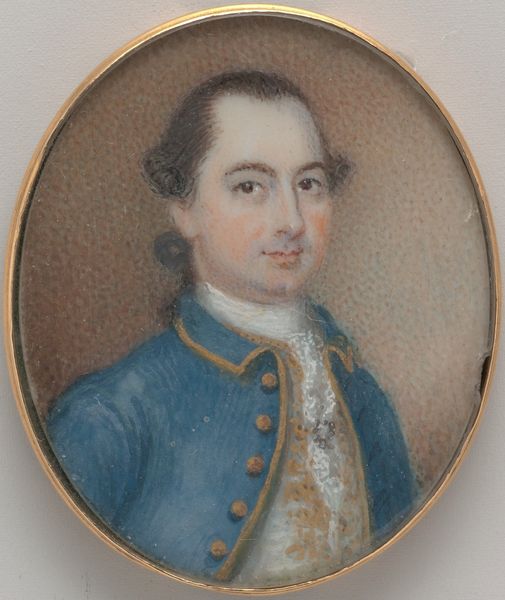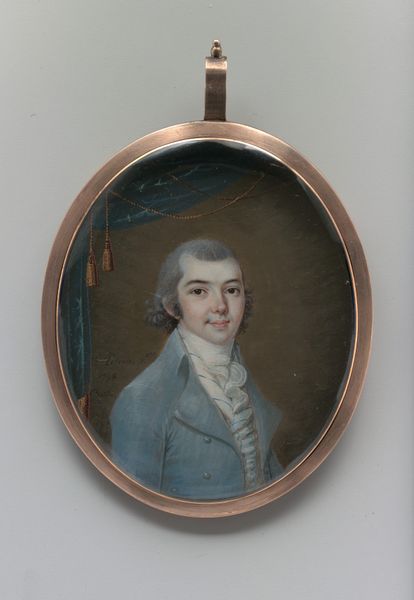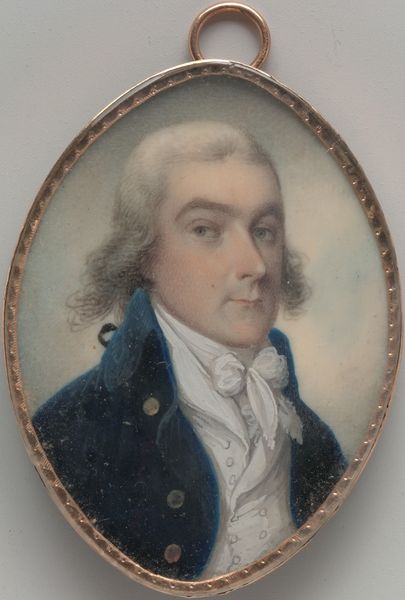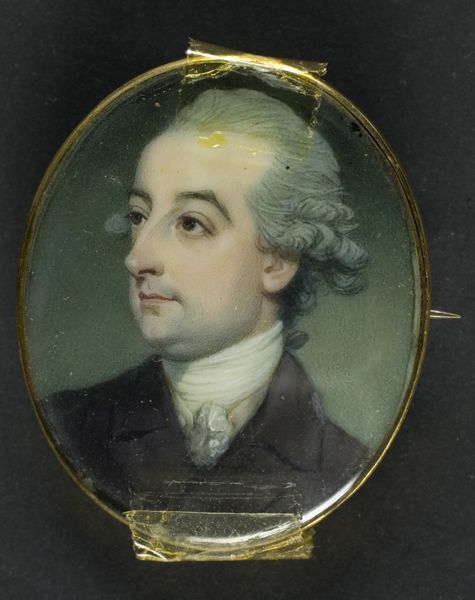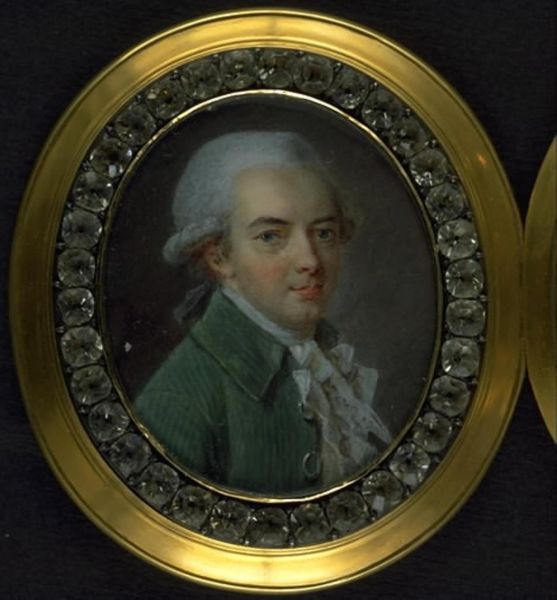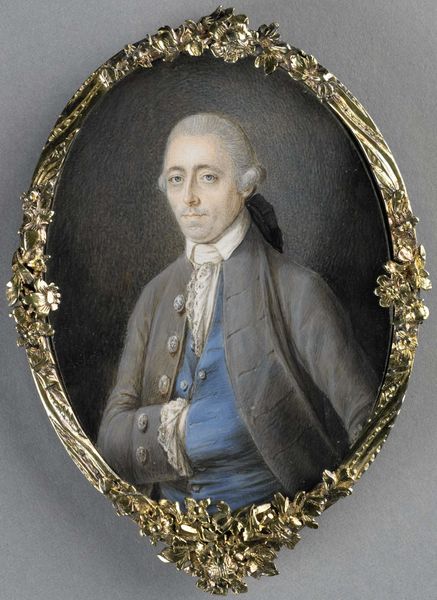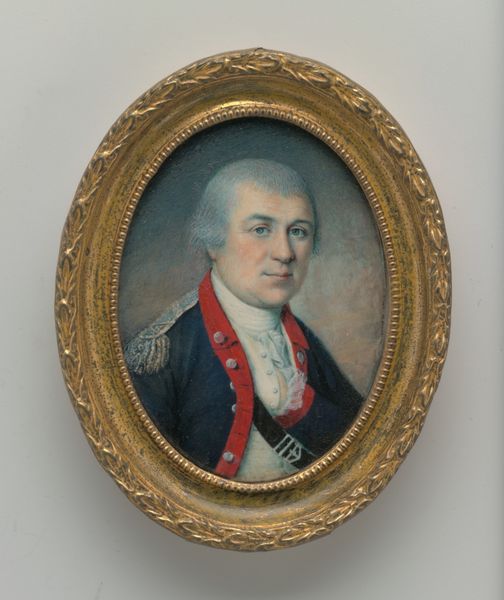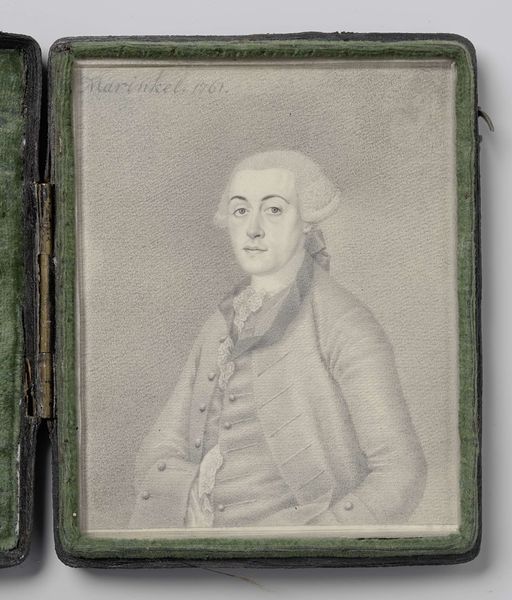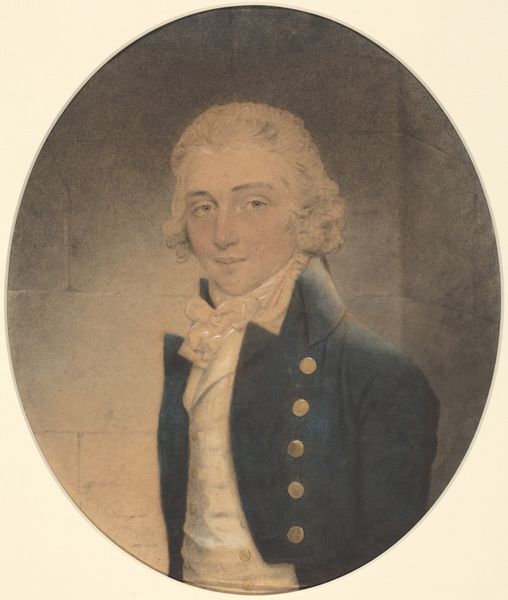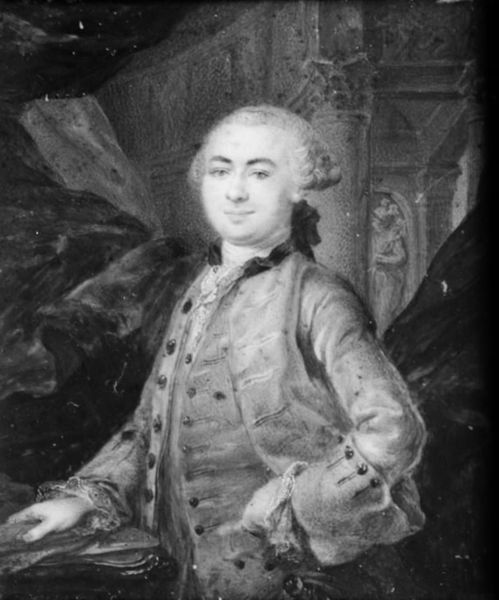
Dimensions: 5.5 cm (height) x 7.7 cm (width) (Netto)
Editor: This is *Mandsportræt*, a miniature portrait created with oil paint some time between 1756 and 1804 by Cornelius Høyer. I'm struck by the way the formal attire contrasts with what looks like a somewhat whimsical, almost dreamy, background. What are your initial thoughts? Curator: Oh, what a dandy! I’m immediately transported – almost like falling into a Jane Austen novel. Isn’t it interesting how Høyer captured both the sitter's vanity, reflected in his elaborate garb, and a sense of vulnerability with that slightly quizzical gaze? The lush background softens what could have been an exercise in pure aristocratic showmanship. I can almost smell the perfume. Do you feel that contrast as well? Editor: Absolutely. There’s a real tension there. I’m wondering if that dreamy background symbolizes the sitter’s inner life or perhaps some unattainable ideal? Or am I reading too much into it? Curator: No, not at all! I often think portraits from this era try to present a fantasy—one of control and idyllic landscapes just beyond grasp. But maybe, just maybe, Høyer is letting us peek behind the curtain a little. He lets the colors blend seamlessly, not in such a crisp baroque manner. That could mirror an acceptance of nature, almost like Rousseau advocated. Editor: That's fascinating. So, beyond just recording a likeness, the artist subtly hints at deeper, more progressive ideas? Curator: Exactly. And, of course, we must remember these miniature portraits were often deeply personal objects – mementos to be carried, gazed upon in secret. Who knew powdered wigs could contain so much! I hadn't considered the role nature played for him! Thanks. Editor: Indeed! Thinking about it now, I'll never look at 18th-century portraits quite the same way. Thank you!
Comments
No comments
Be the first to comment and join the conversation on the ultimate creative platform.
